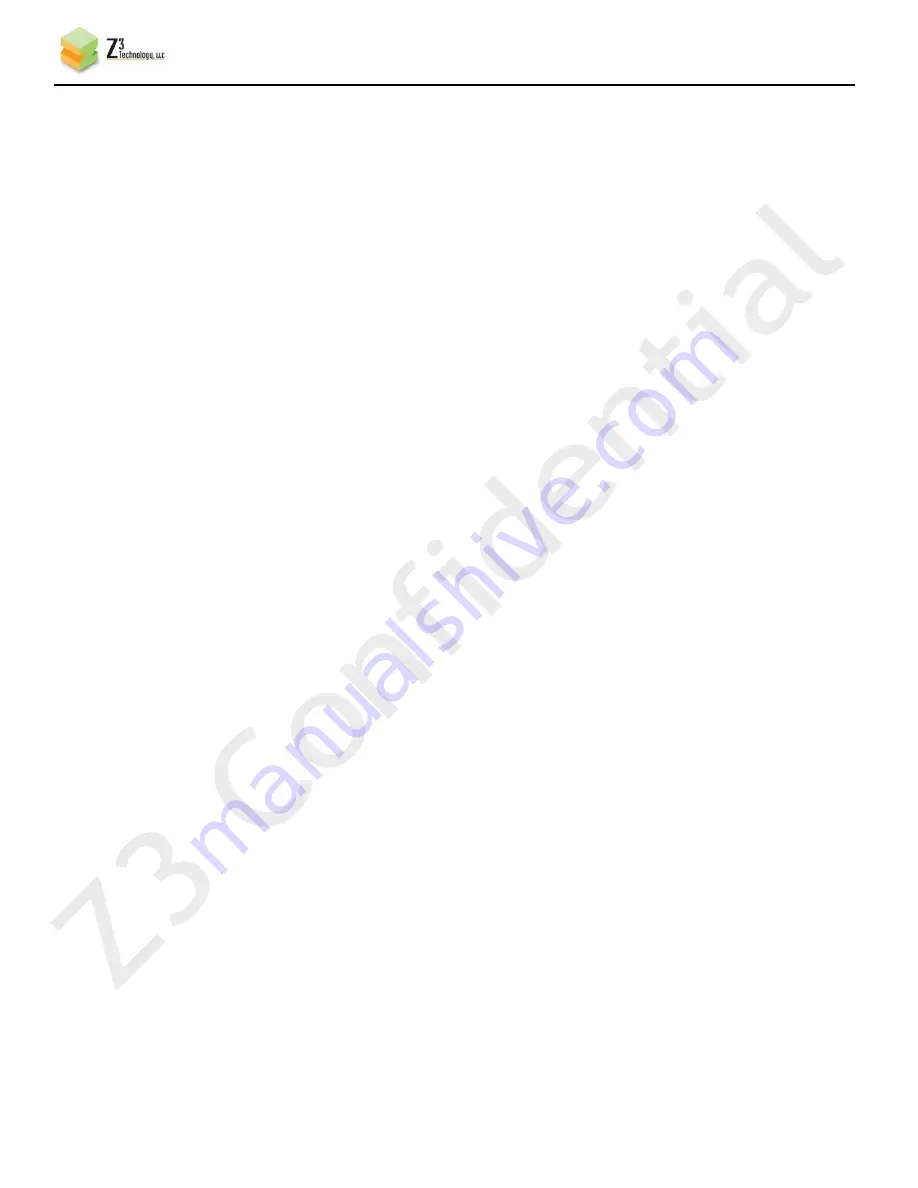
CONFIDENTIAL
DOC-USR-0012-08
___________________________________________________________________________________________
Z3 Technology, LLC
♦
100 N 8
th
ST, STE 250
♦
Lincoln, NE 68508-1369 USA
♦
+1.402.323.0702
49
(b)
Create /export/users and set it up:
# mkdir –p /export/users
# mount –bind /export/users /home/users
(c)
Add the following line to etc/fstab:
/home/users /export/users none bind 0 0
(d)
Add an entry for the file system directory in /etc/exports. For example, the line would be
something like (here, 192.168.0.6 is the IP address of the PC):
/home/z3/z3-dm810x/filesys/fs
192.168.0.6/255.255.0.0(no_root_squash,insecure,nohide,rw,async)
(e)
Create symbolic links in your top-level directory to allow access to your filesys and images
directory (note: actual directory name may be different depending on your specific
release):
# cd /home/z3/z3-dm810x
# ln –s z3-centaurus-dm810x_RDK-20140304/images images
# ln –s z3-centaurus-dm810x_RDK-20140304/filesys filesys
(f)
Start the NFS server
# sudo service nfs-kernel-server restart
(3)
Configure u-boot on your board to match your system configuration settings
(a)
Reboot the board with Minicom or TeraTerm setup on your PC (see Steps (5)/(6) in Section 5).
(b)
Press the space bar immediately to make it stop in the u-boot prompt.
(c)
The next step is to prepare the environment variable script to match your own environment
settings. Go to the u-boot directory in the release directory and edit the file “u-boot-env-
dm810x-rdk.txt” (here emacs is used – any text editor can be used)
# cd /home/z3/z3-dm810x
# cd z3-centaurus-dm810x
_
RDK-20140401
# cd u-boot
# emacs u-boot-env-dm810x-rdk.txt
















































